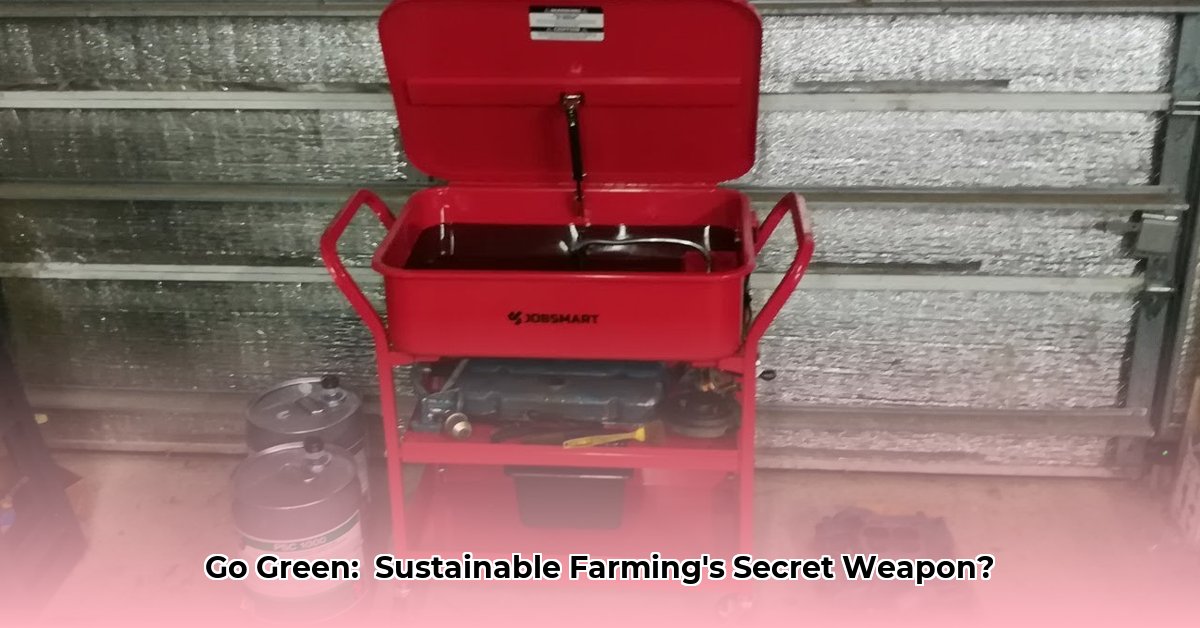
The Environmental Impact of Traditional Farm Equipment Cleaning
Traditional farm equipment cleaning methods rely heavily on water and harsh chemicals, leading to significant environmental consequences. Gallons of water are wasted, and chemical runoff contaminates soil and waterways, harming ecosystems and potentially impacting human health. This unsustainable approach needs a modern, eco-friendly alternative. Isn't it time we explored better options? Find local retailers like Tractor Supply for sustainable solutions.
Compact Parts Washers: A Sustainable Solution
Compact parts washers, available from retailers like Tractor Supply, offer a significantly more sustainable approach to cleaning agricultural equipment. These space-saving units drastically reduce water and chemical consumption compared to traditional methods. Brands like Eastwood and Crown provide reliable options designed for efficiency and reduced environmental impact. How much water and chemicals do you think you could save with a parts washer?
Choosing Eco-Friendly Cleaning Solutions: The Key to Success
Selecting the right cleaning solution is paramount for truly sustainable cleaning. Prioritize biodegradable, non-toxic cleaners specifically designed for agricultural equipment. Look for products with certifications confirming their environmental safety. "Choosing biodegradable cleaners is crucial for minimizing environmental impact," says Dr. Emily Carter, Agricultural Sustainability Expert at the University of California, Davis. Always check labels for safety precautions and proper disposal instructions. Remember, responsible cleaning starts with the right products!
Step-by-Step Guide to Sustainable Parts Cleaning
This step-by-step process ensures efficient and environmentally responsible cleaning using a compact parts washer:
Step 1: Preparation (Safety First!) Always wear appropriate safety gear, including gloves and eye protection. Ensure adequate ventilation in your workspace. Remove large debris from parts before washing.
Step 2: Selecting Your Biodegradable Cleaner Choose a certified biodegradable cleaner suitable for your equipment and the type of soil. Follow the manufacturer's instructions precisely.
Step 3: The Wash Cycle Fill the parts washer with the recommended amount of cleaning solution and water. Submerge parts completely. Allow them to soak for the recommended duration.
Step 4: Thorough Rinsing After the wash cycle, thoroughly rinse parts with clean water to eliminate all traces of the cleaning solution. This step is essential for preventing environmental contamination.
Step 5: Drying and Storage Allow parts to air dry completely to prevent rust and corrosion. Store them properly to maintain their cleanliness.
Step 6: Responsible Disposal Dispose of used cleaning solutions and wastewater according to local regulations and manufacturer guidelines. Never discharge chemicals directly into the environment.
Maintaining Your Parts Washer for Longevity
Regular maintenance is key to the longevity of your parts washer and reduces the need for replacements. This contributes to reduced waste and a smaller environmental footprint. Follow the manufacturer's guidelines for cleaning and maintenance schedules, which will generally involve periodic cleaning of the washer tank and filter.
Advanced Sustainable Practices: Future-Proofing Your Farm
For truly advanced sustainability, consider investing in closed-loop systems that recycle cleaning solutions, minimizing water and chemical use even further. "Closed-loop systems offer substantial long-term economic and environmental benefits,” notes Professor John Miller, Agricultural Engineering Department Head at Cornell University. While initial investment costs may be higher, the long-term returns are significant, reflecting a dedication to responsible farming.
Conclusion: A Greener Future for Farming
Adopting sustainable parts cleaning practices is a vital step towards eco-friendly farming. Switching to a compact parts washer and using biodegradable cleaners significantly reduces your environmental impact. By following these guidelines and embracing future innovations, farmers can contribute to a healthier planet while maintaining efficient and productive operations. What steps will you take today to make your farm more sustainable?